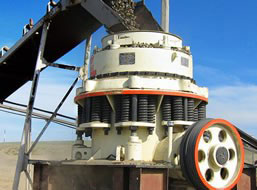High-efficiency wet ball mill media are essential for optimizing the grinding process in wet ball milling operations. The choice of media can significantly impact the efficiency, energy consumption, and quality of the final product. Here are some key considerations and types of high-efficiency wet ball mill media:
1. Material Composition
– Ceramic Media: Alumina (Al2O3) and zirconia (ZrO2) are commonly used due to their high density, hardness, and wear resistance. They are ideal for grinding fine particles and are chemically inert, making them suitable for a wide range of materials.
– Steel Media: High-chromium steel or stainless steel balls are used for their high density and durability. They are effective for coarse grinding but may introduce contamination in certain applications.
– Glass Media: Glass beads are used for applications requiring minimal contamination. They are less dense than ceramic or steel but are suitable for fine grinding.
2. Size and Shape
– Size: The size of the grinding media should be chosen based on the particle size of the material being ground. Smaller media are more effective for fine grinding, while larger media are better for coarse grinding.
– Shape: Spherical media are most common due to their uniform contact with the material being ground. Cylindrical or other shaped media may be used for specific applications.
3. Density
– Higher density media provide more impact energy per unit volume, which can lead to more efficient grinding. However, higher density media also require more energy to operate.
4. Wear Resistance
– High wear resistance is crucial to maintain consistent grinding efficiency over time. Ceramic media generally offer superior wear resistance compared to steel or glass.
5. Surface Finish
– A smooth surface finish on the media can reduce friction and wear, leading to longer life and more efficient grinding.
 6. Chemical Compatibility
6. Chemical Compatibility
– The media should be chemically compatible with the material being ground to avoid contamination or adverse reactions.
7. Cost-Effectiveness
– While high-performance media may have a higher initial cost, their longer lifespan and improved efficiency can lead to lower overall operating costs.
.jpg) Applications
Applications
– Ceramics Industry: Alumina and zirconia media are widely used for grinding ceramic powders.
– Pharmaceuticals: Glass or ceramic beads are preferred to avoid contamination.
– Minerals Processing: Steel or ceramic balls are used depending on




